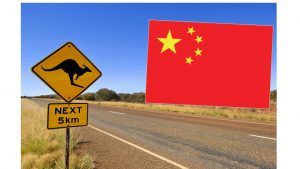On the first da y of Premier Li’s visit to Australia, the Chinese leader was welcomed by the Australian Prime Minister Malcolm Turnbull at Parliament House in Canberra. This is Premier Li’s third visit to Australia and comes at a time when the China Australia Free Trade Agreement is 15 months old.
y of Premier Li’s visit to Australia, the Chinese leader was welcomed by the Australian Prime Minister Malcolm Turnbull at Parliament House in Canberra. This is Premier Li’s third visit to Australia and comes at a time when the China Australia Free Trade Agreement is 15 months old.
Though young, what has ChAfta meant for Australian businesses so far?
For starters, over 96 per cent of Australia’s goods exports may enter China duty free or with preferential access.
As a result, exports in food and beverages have flourished.
Wine exports are up 38 per cent; fresh orange exports are up 46 per cent; skin care products exports are up 82 per cent; abalone exports to China more than doubled; and Chinese imports of Australian lobster quadrupled.
SMEs in other sectors are benefiting too. For example, BJP, a pharmaceutical manufacturer based in the Gold Coast, has increased its exports by 20 per cent and tripled its staff in 18 months.
Meanwhile the Australian tourism sector hosted 1 million Chinese tourists who visited the country last year.
During Premier Li’s visit, the two leaders will announce the next steps in the evolution of the China Australia Free Trade Agreement.
“China must feed 20 per cent of the world’s population, but has only 7 per cent of the world’s arable land. Its middle class is growing at a staggering rate,” Prime Minister Turnbull said.
Addressing that, one of the new deals to be sealed as part of the evolving free trade agreement will be increasing the number of Australian beef producers licensed to export to China, providing greater access to the Chinese market for Australian exporters.
China is Australia’s largest trading partner. The new deals to be signed under the China Australia Free Trade Agreement will build on the well-established trading partnership already worth A$150 billion. Just another reason why businesses are well placed to be based in Australia.

